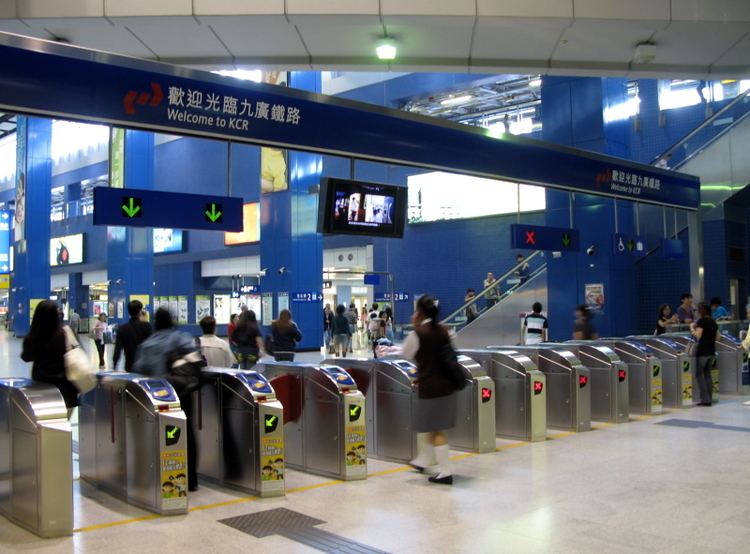 | ||
In rail transport, the paid area is a dedicated "inner" zone in a railway station or metro station barriers, which visitor or passenger requires a valid ticket, checked smartcard or a pass to get in. A system using paid areas is often called fare control. Passengers are allowed to enter or exit only through a faregate. A paid area usually exists in rapid transit railway stations for separating the train platform from the station exit, ensuring a passenger has paid or prepaid before reaching the platform and using any transport service. Such design requires a well-organized railway station layout.
The paid area is similar in concept to the airside at an airport. However, in most cases entrance to the paid area requires only a valid ticket or transit pass. The exception is in certain cases of international rail travel, where passengers must also pass through immigration control and customs to enter the paid area. Examples include the Eurostar international platforms at St. Pancras railway station and Gare du Nord or Woodlands Train Checkpoint in Singapore, where the only departures are to neighbouring Malaysia.
In some rapid transit systems, passengers are banned from eating or drinking inside the paid area of every station (notable exceptions include the New York City Subway and most lines of the Beijing Subway).
Platform ticket
A platform ticket allows non-travelers access to the paid area of a station to make a platform tour, seek for departures of friends or relatives, greet friends and family members or to assist them with their luggage without having to have a ticket for a journey. These are generally available only at major terminal stations, but other smaller stations occasionally grant platform tickets in exchange for a piece of identification.
